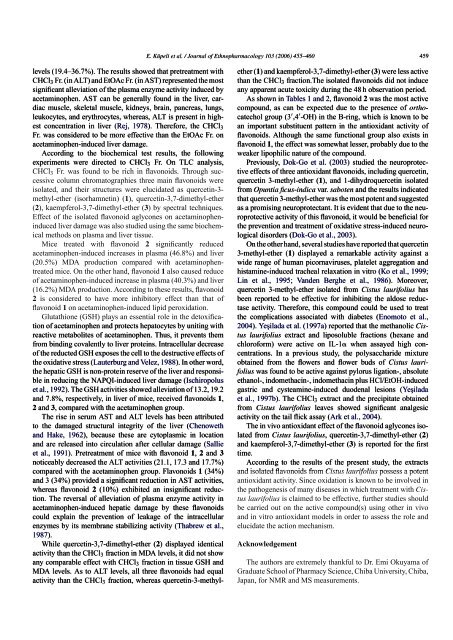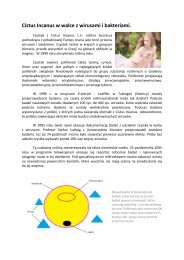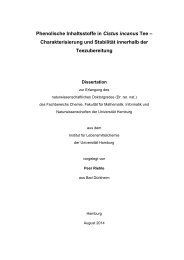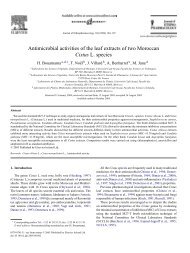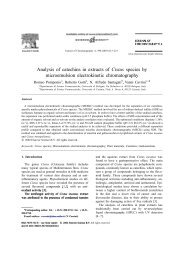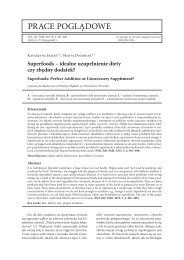cistus laurifolius
The genus is one of the characteristic genera of the Mediterranean region, colonizing degraded areas (Attaguile et al., 2000). L. (cistaceae) is a common plant in Anatolia and is used against various ailments in traditional medicine. The plant leaves are used to treat rheumatic and related inflammatory diseases, externally as a bath or poultice to reduce pain in rheumatism, against fever in common cold or applied externally as a plaster on the dorsal part of the body in a line of the kidneys for urinary inflammations.
The genus is one of the characteristic genera of the Mediterranean region, colonizing degraded areas (Attaguile et al., 2000). L. (cistaceae) is a common plant in Anatolia and is used against various ailments in traditional medicine. The plant leaves are used to treat rheumatic and related inflammatory diseases, externally as a bath or poultice to reduce pain in rheumatism, against fever in common cold or applied externally as a plaster on the dorsal part of the body in a line of the kidneys for urinary inflammations.
Create successful ePaper yourself
Turn your PDF publications into a flip-book with our unique Google optimized e-Paper software.
459<br />
levels (19.4–36.7%). The results showed that pretreatment with<br />
CHCl 3 Fr. (in ALT) and EtOAc Fr. (in AST) represented the most<br />
significant alleviation of the plasma enzyme activity induced by<br />
acetaminophen. AST can be generally found in the liver, cardiac<br />
muscle, skeletal muscle, kidneys, brain, pancreas, lungs,<br />
leukocytes, and erythrocytes, whereas, ALT is present in highest<br />
concentration in liver (Rej, 1978). Therefore, the CHCl 3<br />
Fr. was considered to be more effective than the EtOAc Fr. on<br />
acetaminophen-induced liver damage.<br />
According to the biochemical test results, the following<br />
experiments were directed to CHCl 3 Fr. On TLC analysis,<br />
CHCl 3 Fr. was found to be rich in flavonoids. Through successive<br />
column chromatographies three main flavonoids were<br />
isolated, and their structures were elucidated as quercetin-3-<br />
methyl-ether (isorhamnetin) ( ), quercetin-3,7-dimethyl-ether<br />
( ), kaempferol-3,7-dimethyl-ether ( ) by spectral techniques.<br />
Effect of the isolated flavonoid aglycones on acetaminopheninduced<br />
liver damage was also studied using the same biochemical<br />
methods on plasma and liver tissue.<br />
Mice treated with flavonoid significantly reduced<br />
acetaminophen-induced increases in plasma (46.8%) and liver<br />
(20.5%) MDA production compared with acetaminophentreated<br />
mice. On the other hand, flavonoid also caused reduce<br />
of acetaminophen-induced increase in plasma (40.3%) and liver<br />
(16.2%) MDA production. According to these results, flavonoid<br />
is considered to have more inhibitory effect than that of<br />
flavonoid on acetaminophen-induced lipid peroxidation.<br />
Glutathione (GSH) plays an essential role in the detoxification<br />
of acetaminophen and protects hepatocytes by uniting with<br />
reactive metabolites of acetaminophen. Thus, it prevents them<br />
from binding covalently to liver proteins. Intracellular decrease<br />
of the reducted GSH exposes the cell to the destructive effects of<br />
the oxidative stress (Lauterburg and Velez, 1988). In other word,<br />
the hepatic GSH is non-protein reserve of the liver and responsible<br />
in reducing the NAPQI-induced liver damage (Ischiropolus<br />
et al., 1992). The GSH activities showed alleviation of 13.2, 19.2<br />
and 7.8%, respectively, in liver of mice, received flavonoids ,<br />
and , compared with the acetaminophen group.<br />
The rise in serum AST and ALT levels has been attributed<br />
to the damaged structural integrity of the liver (Chenoweth<br />
and Hake, 1962), because these are cytoplasmic in location<br />
and are released into circulation after cellular damage (Sallie<br />
et al., 1991). Pretreatment of mice with flavonoid , and<br />
noticeably decreased the ALT activities (21.1, 17.3 and 17.7%)<br />
compared with the acetaminophen group. Flavonoids (34%)<br />
and 3 (34%) provided a significant reduction in AST activities,<br />
whereas flavonoid (10%) exhibited an insignificant reduction.<br />
The reversal of alleviation of plasma enzyme activity in<br />
acetaminophen-induced hepatic damage by these flavonoids<br />
could explain the prevention of leakage of the intracellular<br />
enzymes by its membrane stabilizing activity (Thabrew et al.,<br />
1987).<br />
While quercetin-3,7-dimethyl-ether ( ) displayed identical<br />
activity than the CHCl 3 fraction in MDA levels, it did not show<br />
any comparable effect with CHCl 3 fraction in tissue GSH and<br />
MDA levels. As to ALT levels, all three flavonoids had equal<br />
activity than the CHCl 3 fraction, whereas quercetin-3-methylether<br />
( ) and kaempferol-3,7-dimethyl-ether ( ) were less active<br />
than the CHCl 3 fraction.The isolated flavonoids did not induce<br />
any apparent acute toxicity during the 48 h observation period.<br />
As shown in Tables 1 and 2, flavonoid was the most active<br />
compound, as can be expected due to the presence of -<br />
catechol group (3 ,4 -OH) in the B-ring, which is known to be<br />
an important substituent pattern in the antioxidant activity of<br />
flavonoids. Although the same functional group also exists in<br />
flavonoid , the effect was somewhat lesser, probably due to the<br />
weaker lipophilic nature of the compound.<br />
Previously, Dok-Go et al. (2003) studied the neuroprotective<br />
effects of three antioxidant flavonoids, including quercetin,<br />
quercetin 3-methyl-ether ( ), and 1-dihydroquercetin isolated<br />
from - var. and the results indicated<br />
that quercetin 3-methyl-ether was the most potent and suggested<br />
as a promising neuroprotectant. It is evident that due to the neuroprotective<br />
activity of this flavonoid, it would be beneficial for<br />
the prevention and treatment of oxidative stress-induced neurological<br />
disorders (Dok-Go et al., 2003).<br />
On the other hand, several studies have reported that quercetin<br />
3-methyl-ether ( ) displayed a remarkable activity against a<br />
wide range of human picornaviruses, platelet aggregation and<br />
histamine-induced tracheal relaxation in vitro (Ko et al., 1999;<br />
Lin et al., 1995; Vanden Berghe et al., 1986). Moreover,<br />
quercetin 3-methyl-ether isolated from<br />
has<br />
been reported to be effective for inhibiting the aldose reductase<br />
activity. Therefore, this compound could be used to treat<br />
the complications associated with diabetes (Enomoto et al.,<br />
2004). Yeşilada et al. (1997a) reported that the methanolic<br />
extract and liposoluble fractions (hexane and<br />
chloroform) were active on IL-1 when assayed high concentrations.<br />
In a previous study, the polysaccharide mixture<br />
obtained from the flowers and flower buds of<br />
was found to be active against pylorus ligation-, absolute<br />
ethanol-, indomethacin-, indomethacin plus HCl/EtOH-induced<br />
gastric and cysteamine-induced duodenal lesions (Yeşilada<br />
et al., 1997b). The CHCl 3 extract and the precipitate obtained<br />
from<br />
leaves showed significant analgesic<br />
activity on the tail flick assay (Ark et al., 2004).<br />
The in vivo antioxidant effect of the flavonoid aglycones isolated<br />
from , quercetin-3,7-dimethyl-ether ( )<br />
and kaempferol-3,7-dimethyl-ether ( ) is reported for the first<br />
time.<br />
According to the results of the present study, the extracts<br />
and isolated flavonoids from<br />
possess a potent<br />
antioxidant activity. Since oxidation is known to be involved in<br />
the pathogenesis of many diseases in which treatment with<br />
is claimed to be effective, further studies should<br />
be carried out on the active compound(s) using other in vivo<br />
and in vitro antioxidant models in order to assess the role and<br />
elucidate the action mechanism.<br />
The authors are extremely thankful to Dr. Emi Okuyama of<br />
Graduate School of Pharmacy Science, Chiba University, Chiba,<br />
Japan, for NMR and MS measurements.


